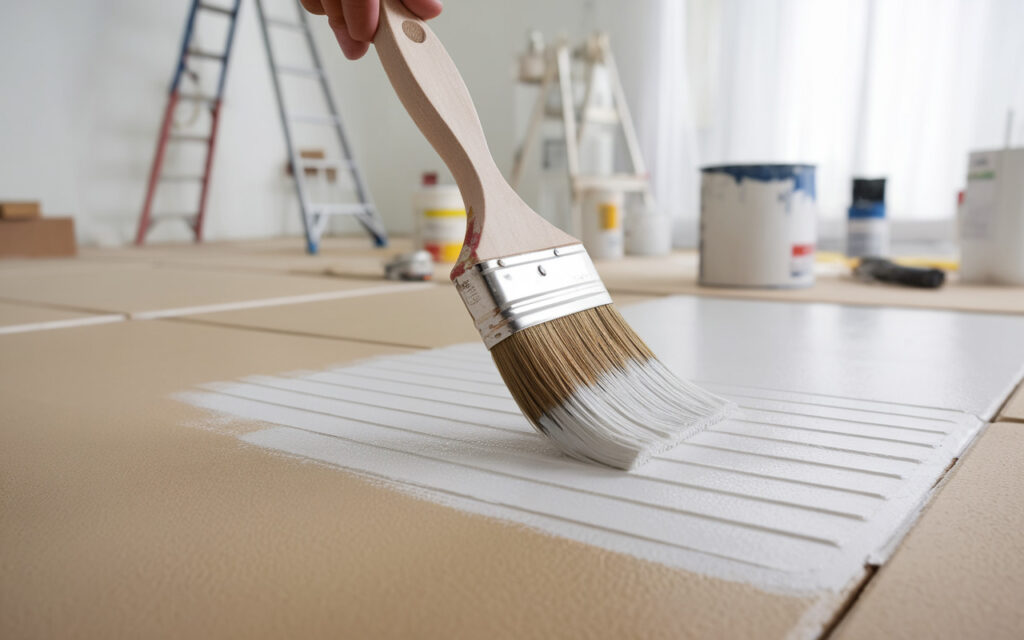Yes, you can transform those outdated tiles without replacing them!
Tired of living with ugly tile floors but don’t want to spend thousands on replacement? I’ve got good news. In this article, I’ll show you exactly how to paint your tile floors for a fresh new look that lasts.
You’ll discover the complete step-by-step process, from preparation to finishing touches. I’ll share the exact materials you need, common mistakes to avoid, and professional techniques that ensure durability.
As a professional painter with 15+ years of experience renovating tile floors, I’ve refined these methods through hundreds of projects. The techniques in this article have helped thousands of homeowners transform their spaces for under $100 in a single weekend.
Whether your tiles are in the bathroom, kitchen, or entryway, you’ll find specific guidance for your situation. Let’s turn those eyesores into showstoppers!
Can You Paint Tile Floors?
Yes! With the right prep and products, painting tile works well as a DIY option.
Best for: Ceramic and porcelain tiles in bathrooms, kitchens, and mudrooms-avoid shower interiors.
What you’ll need:
- Cleaning supplies
- Fine-grit sandpaper
- Tile primer
- Floor paint/epoxy
- Sealer
Cost comparison: Tile replacement: $1,000-3,000 vs. Painting: $100-300
Simple process:
- Clean thoroughly
- Sand lightly
- Prime
- Paint
- Seal
Keep in mind: Paint won’t fix broken tiles, grout lines will show, and high-traffic areas wear faster. Allow 72+ hours to dry completely.
Tip: Test a small area first before committing to the entire room.
What You’ll Need
Essential supplies:
- Tile cleaner/degreaser (e.g., Krud Kutter)
- Painter’s tape
- High-quality 3/8″ nap roller
- Rust-Oleum HOME Floor Coating Base Coat & Top Coat
Optional for customization:
- Stencils
- Small brushes
- Accent colors
Get everything ready before you start. The 3/8″ nap roller is key for getting paint into grout lines.
For a standard bathroom (40 sq ft), budget:
- Cleaner: $8-15
- Tape: $5-10
- Roller and tray: $12-20
- Paint system: $70-100
- Total: $95-145
Pro tip: Buy extra painter’s tape for toilets and vanities. A small powder room needs one kit; larger spaces might need two.
Quality matters. The right supplies make the difference between a floor that lasts years and one that peels in months.
Step-by-Step: How to Paint a Tile Floor
Step 1- Prep the Surface
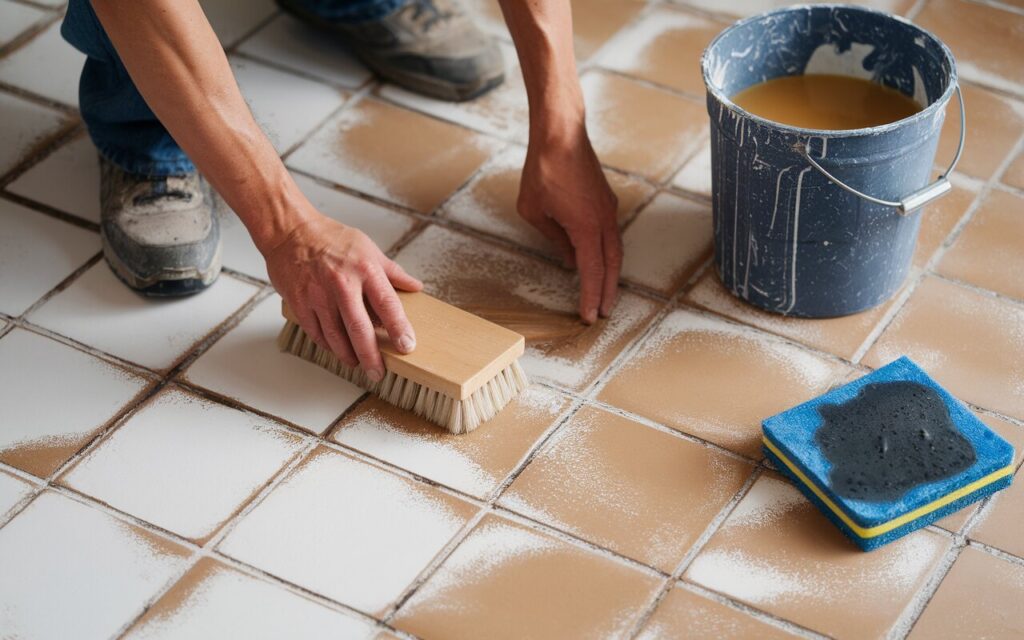
- Clean thoroughly with a degreaser-no residue or wax.
- Repair damaged tiles or grout lines before starting.
Step 2- Tape & Test
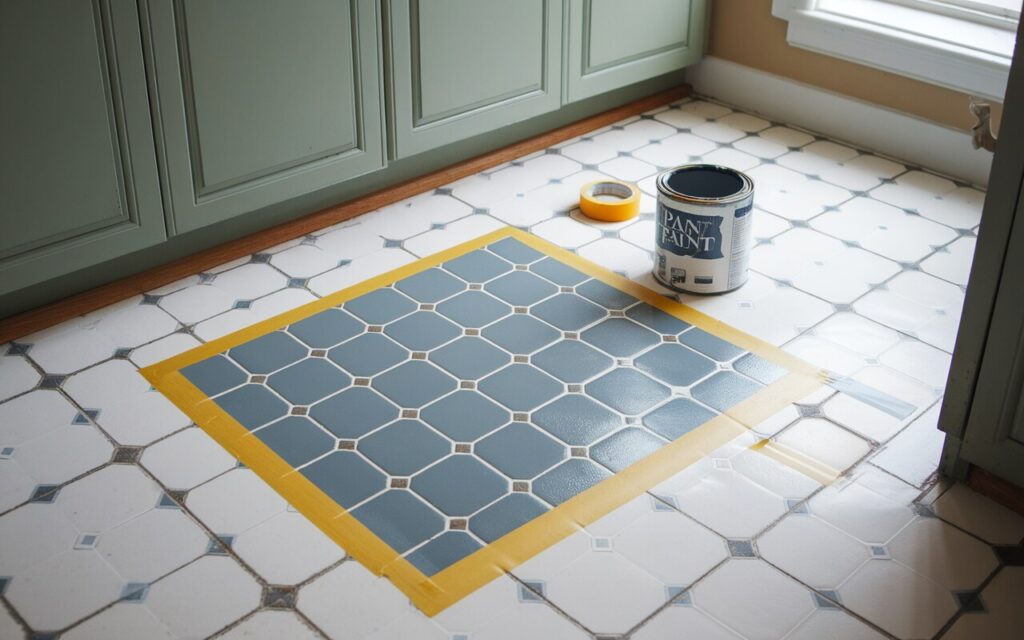
- Mask off edges, cabinets, and trim with painter’s tape.
- Perform adhesion test: Paint a 3″x3″ area, wait 12 hours, tape test it.
- Sand if paint doesn’t adhere properly.
Step 3- Apply Base Coat

- Start from the far corner, work in 4 ‘x 4’ sections.
- Use a smooth, even rolling technique.
- Only one coat is typically needed-let dry 6 hours.
Step 4- Optional: Add Stencils or Designs
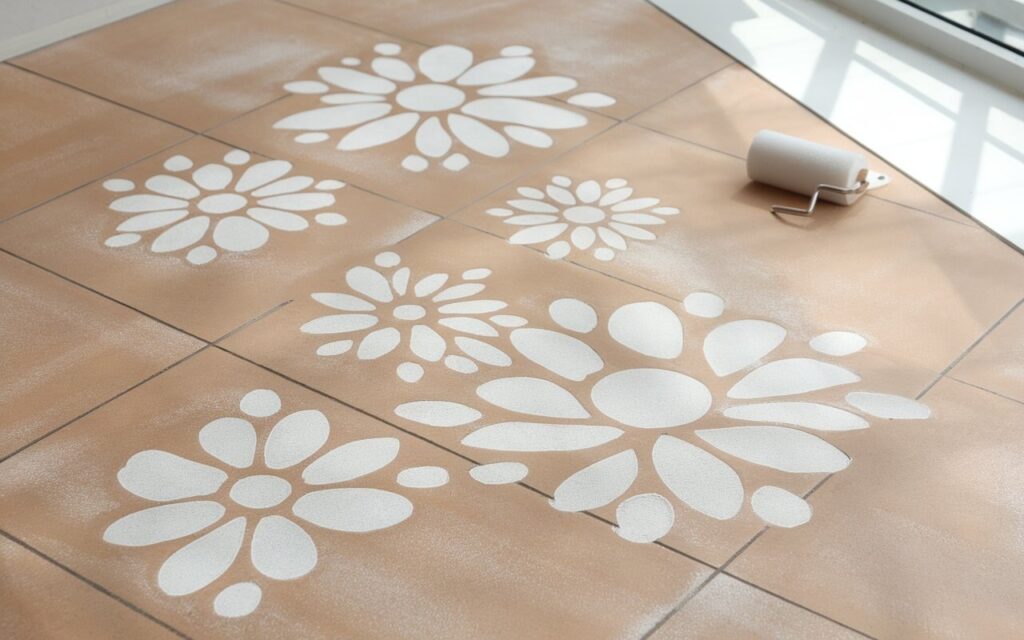
- Wait 6+ hours after the base coat is dry.
- Apply designs with a small foam roller or brush.
Step 5- Apply Top Coat

- Apply evenly using the same method as a base coat.
- For high-traffic areas, a second top coat is optional (within 24 hours).
Step 6- Let It Cure
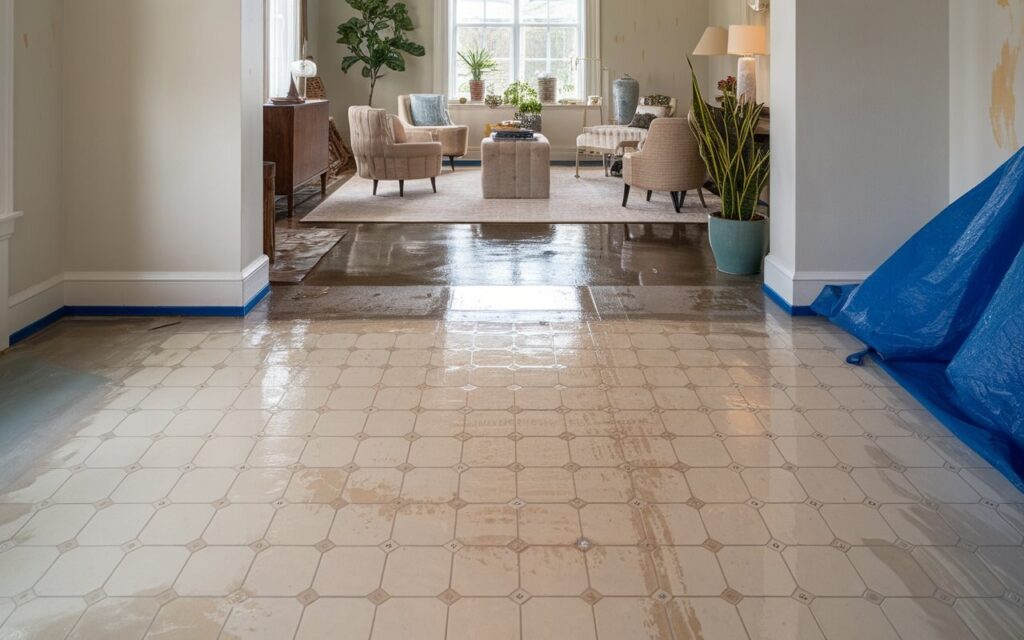
- Wait 24 hours before light foot traffic.
- Wait 72 hours before placing furniture (lift-don’t drag).
- Full cure in 7 days-avoid cleaning during this time.
I’ve painted many tile floors, and the steps above are what works. The prep is everything. Skip it, and your paint won’t last.
Start by cleaning like you mean it. Any soap film or grease left will cause the paint to peel off later. I scrub twice to be sure.
Testing is not optional. I once skipped the test patch and had to redo an entire floor. That small 3-inch square can save you days of work.
When you roll on the base coat, keep it thin. Thick paint leads to bubbles and peeling. Two thin coats beat one thick coat every time.
The waiting times are real. I get it-you want to use your bathroom again. But rushing means ruined work.
Some tips from my mistakes:
- Open windows for good air flow
- Turn off the AC/heat during painting to prevent dust
- Use a headlamp for seeing missed spots
- Keep pets away until fully cured
What about the grout lines? You have options:
- Paint over them completely (easiest)
- Paint them a different color (more work, but looks great)
- Use a grout pen after painting (best control)
Want to make your floor last longer? Use rugs in high-traffic spots. And clean gently-no scrubbing brushes or harsh chemicals.
The best part? If it gets worn in a few years, you can just do it again!
Conclusion
Painting your tile floors is a practical, budget-friendly way to transform a space. With proper preparation, quality materials, and patience during the curing process, you can create floors that look fresh and new.
While it won’t last forever, a well-done painted tile floor can give you years of enjoyment before needing a touch-up. Remember, the key steps are thorough cleaning, proper adhesion testing, and allowing adequate drying time between coats.
If you’re tired of your outdated tile but not ready for a full renovation, grab your supplies and give painting a try. The results might surprise you.
FAQs
Can I paint bathroom floor tiles?
Yes, bathroom floor tiles can be painted with proper preparation and sealing. Avoid shower floors where standing water occurs.
How long does painted tile flooring last?
With proper preparation and sealing, painted tile floors typically last 3-5 years before needing touch-ups or repainting.
Can I paint over grout lines?
Yes, you can paint over grout lines for a uniform look or use a grout pen afterward for contrast.
Do I need to remove the toilet to paint bathroom tiles?
Ideally yes. Removing the toilet gives better results, but you can carefully paint around it if necessary.
Is tile paint waterproof?
Most tile paints are water-resistant, not fully waterproof. Use a quality sealer for better moisture protection.
What kind of paint works best on tile floors?
Epoxy or urethane-based paints designed specifically for floors work best. Regular wall paint will quickly wear off.

